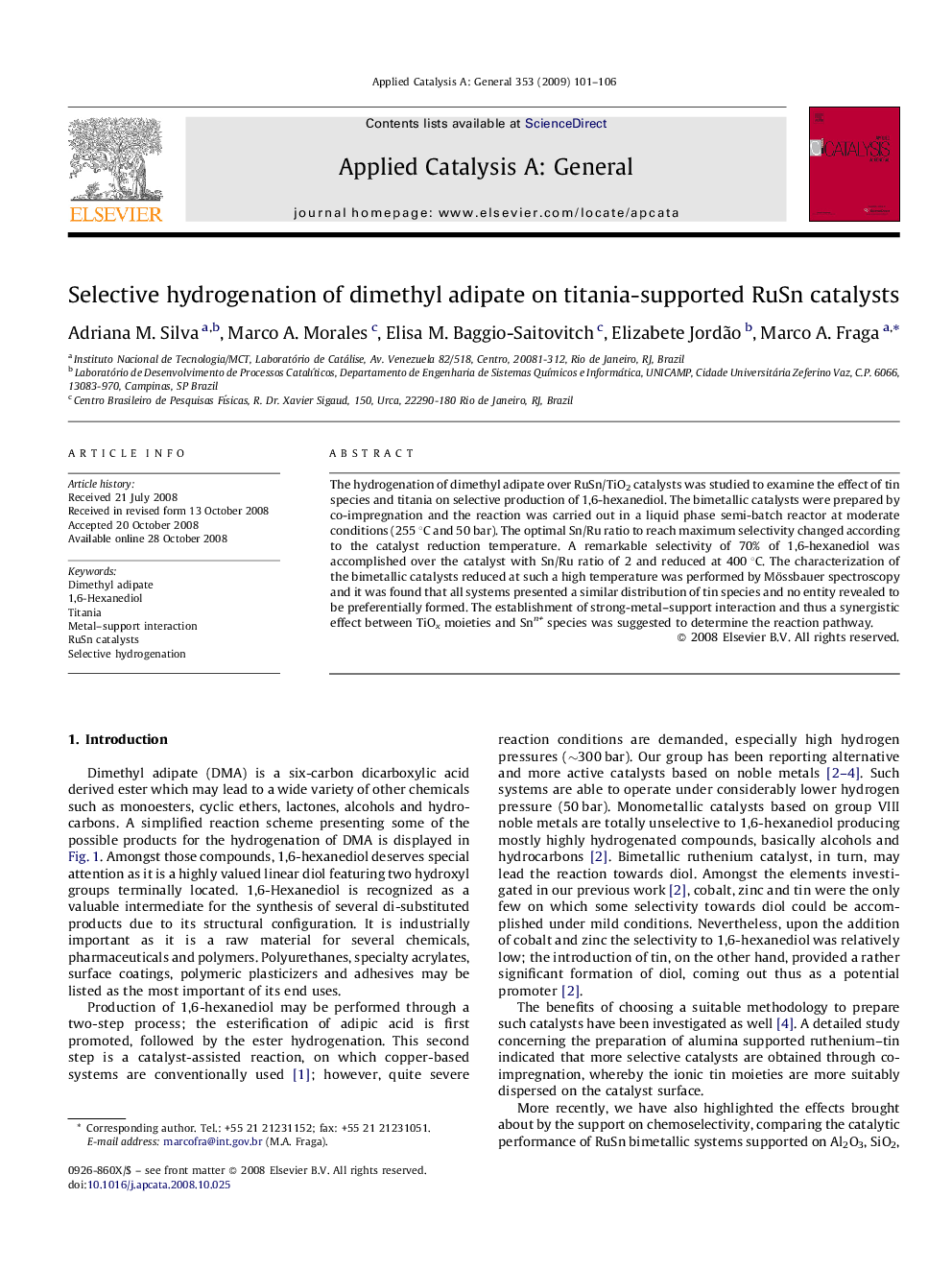| Article ID | Journal | Published Year | Pages | File Type |
|---|---|---|---|---|
| 43085 | Applied Catalysis A: General | 2009 | 6 Pages |
The hydrogenation of dimethyl adipate over RuSn/TiO2 catalysts was studied to examine the effect of tin species and titania on selective production of 1,6-hexanediol. The bimetallic catalysts were prepared by co-impregnation and the reaction was carried out in a liquid phase semi-batch reactor at moderate conditions (255 °C and 50 bar). The optimal Sn/Ru ratio to reach maximum selectivity changed according to the catalyst reduction temperature. A remarkable selectivity of 70% of 1,6-hexanediol was accomplished over the catalyst with Sn/Ru ratio of 2 and reduced at 400 °C. The characterization of the bimetallic catalysts reduced at such a high temperature was performed by Mössbauer spectroscopy and it was found that all systems presented a similar distribution of tin species and no entity revealed to be preferentially formed. The establishment of strong-metal–support interaction and thus a synergistic effect between TiOx moieties and Snn+ species was suggested to determine the reaction pathway.
Graphical abstractThe hydrogenation of dimethyl adipate over RuSn/TiO2 catalysts was studied to examine the effect of tin species and titania on selective production of 1,6-hexanediol. It was found that the optimal Sn/Ru ratio to reach maximum selectivity changed according to the catalyst reduction temperature. A remarkable selectivity of 70% of 1,6-hexanediol was accomplished over the catalyst with Sn/Ru ratio of 2 and reduced at 400 °C. It was concluded that all systems presented a similar distribution of tin species and no entity revealed to be preferentially formed. The establishment of strong-metal–support interaction and thus a synergistic effect between TiOx moieties and Snn+ species was suggested to determine the reaction pathway.Figure optionsDownload full-size imageDownload as PowerPoint slide
